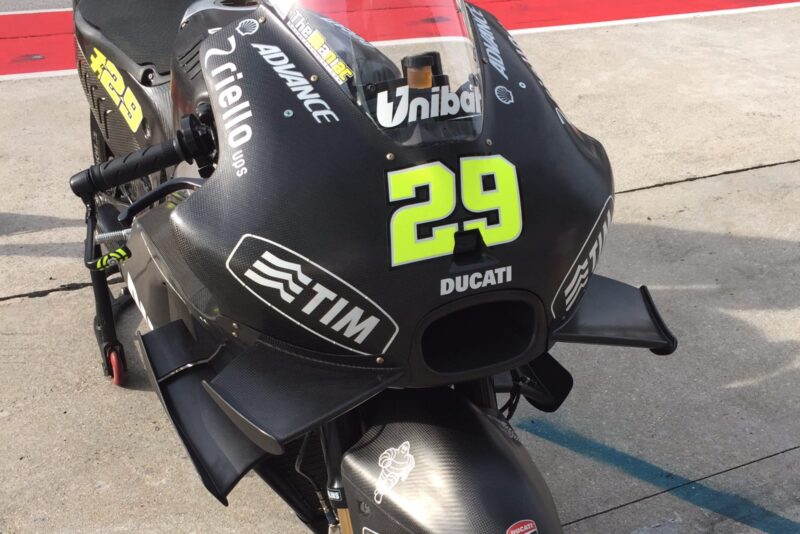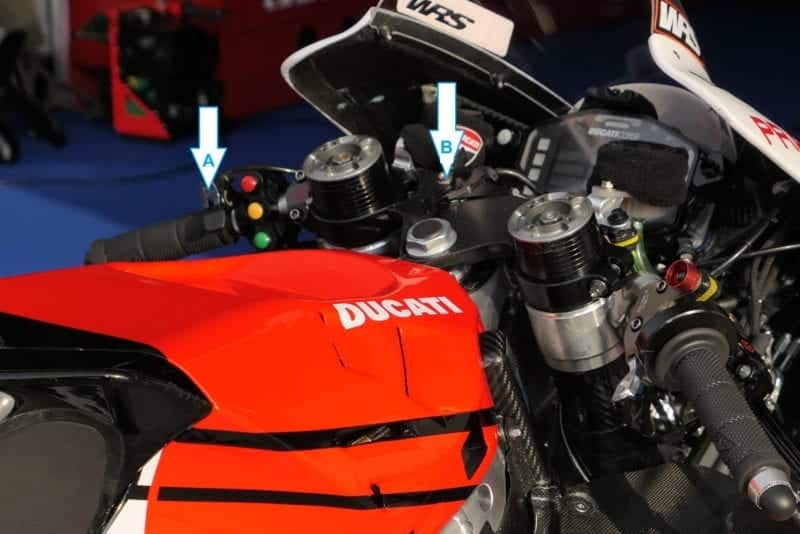Ducati’s latest gadget is the shapeshifter, introduced during the latter stages of last season. The shapeshifter works like the holeshot device, by lowering the bike by compressing the rear shock to reduce wheelies, further assisting the anti-wheelie program.
The shapeshifter is also a mechanical answer to a mechanical problem of Ducati’s own making – its anti-wheelie aero.
As speed increases so does drag, which hurts top speed. By dropping the rear of the motorcycle the shapeshifter flattens the aero angle, reducing drag to regain top speed. Racing cars have been doing this for years.
Dall’Igna and his engineers have come up with all these gadgets because they’ve been very good at discovering gaps in the MotoGP rulebook, just like Adrian Newey and others in Formula 1. This requires a different way of reading the rules – instead of looking at what’s on the page you look out for what isn’t on the page.
Some of Dall’Igna’s innovations have caused controversy. There was a huge fight over aerodynamics and then protests from rival manufacturers against the swinglet.
Four years ago I was one of many who thought Ducati’s radical wings should be banned. This was after the 2016 Sepang tests, when Ducati rocked up with its six-winged GP16, which looked like a 200mph cheese slicer.

Ducati’s 2016 Desmosedici – a 200mph cheese slicer
Oxley
Wings weren’t banned, but MotoGP’s aero regs were rewritten to outlaw the most outlandish designs, which protruded too far and left dirty air behind them, which gave riders trying to catch a tow some scary high-speed instability issues.
Now MotoGP aero is gradually becoming more integrated into the bodywork, which is the right way to go.
MotoGP aero also offer an important safety improvement. There is nowhere more dangerous to have an accident than at the end of a fast straight, where MotoGP bikes usually exceed 200mph and sometimes 220mph, with the front wheel still lifting off the road.
Obviously this isn’t safe. Also, if the front tyre isn’t firmly on the asphalt when the rider hits the brakes the tyre will lock, most likely with disastrous consequences. The downforce created by aerodynamic add-ons helps keep the front tyre on the asphalt, thereby minimising the danger of accidents at high speed.
In fact there is one place worse to have a crash at the end of the main straight and that’s a crash at the end of the start/finish, moments after the start. At this moment there are 22 tightly packed bikes heading into the first corner at, let’s say, 160mph. if something goes wrong at this moment things will get very messy.
Most manufacturers now have, or will soon have, holeshot devices on their MotoGP bikes. The consequences of just one failure could be horrific. Jack Miller’s holeshot device didn’t disengage at the first corner of last year’s British GP – because Turn One at Silverstone doesn’t require a lot of braking from the start – which put the Aussie in an awkward situation.
“I couldn’t get my holeshot device to pop back up, so I went through the first three turns like a chopper,” said Miller. “I was trying to get it to pop up and people were going around me, left, right and centre. It was quite scary towards Turn Three! Basically I had to do a stoppie at Turn Four to free it up. It wasn’t ideal.”
This is why some rival engineers believe that holeshot devices should be banned. Not now, but soon.
“What is the point of holeshot devices, once everyone’s got them?” one anonymous engineer told me recently. “It’s just another thing to go wrong, which has no real use and could cause a very big problem at the first corner. They shouldn’t be banned right now, because that would be unfair to Ducati. But once all six factories have got them they should definitely be banned.”



